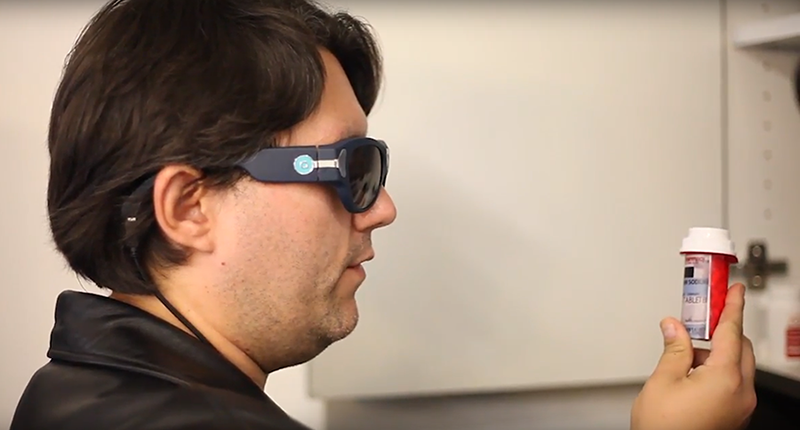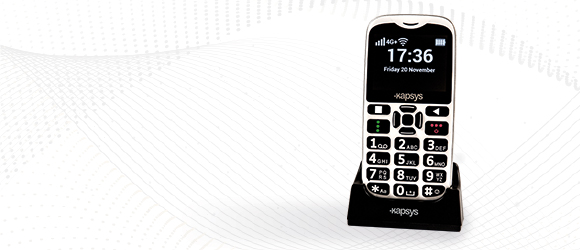Empowering Self-reliance With Assistive Technology for the Blind
The combination of assistive technology right into the lives of people with visual impairments represents a substantial innovation in advertising independence and self-sufficiency. From innovative screen visitors to innovative smart walking canes, these tools not only boost day-to-day navigating and interaction yet likewise encourage customers to involve meaningfully in different facets of life. As we discover the myriad benefits and real-world applications of these technologies, it ends up being crucial to analyze the hidden elements that add to their performance and the capacity for future developments in this important field.
Summary of Assistive Technology

The development of assistive technology is based in concepts of inclusivity and empowerment. Advancements in software application, hardware, and sensory improvements offer individuals with options tailored to their details demands. From display visitors that convert message to speech, to tactile tools that share details via touch, these tools change the way people engage with their environments.
Along with practical applications, assistive innovation promotes better social incorporation and participation in various fields, including education and learning and work (Voice-activated assistive devices). As research and growth remain to progress, the potential for assistive technology to additionally improve the lives of visually damaged individuals remains appealing, paving the way for a much more equitable society where everyone can grow
Sorts Of Assistive Instruments
A range of assistive gadgets have actually emerged to sustain people with visual disabilities, each created to satisfy particular needs and boost day-to-day performance. These tools range from low-tech services to high-tech technologies, giving diverse options for users.
Low-tech devices include magnifiers and large-print materials that aid in analysis and writing. Braille devices, such as Braille slates and styluses, allow responsive reading and communication. Positioning and movement aids, like white walking sticks, assist customers navigate their environment safely.
On the greater end of the spectrum, digital magnification systems and screen visitors provide significant assistance. Digital magnifiers allow individuals to enlarge text and photos on displays, while screen viewers transform digital web content into manufactured speech, assisting in access to details on smartphones and computer systems.
Smartphone applications additionally play an essential function, giving features like text recognition and navigation support. Wearable modern technology, such as smart glasses outfitted with enhanced fact, is arising as a promising device to enhance situational awareness.
Advantages of Assistive Innovation
The integration of assistive modern technology dramatically boosts the quality of life for people with aesthetic problems. These innovations encourage users by advertising independence, allowing them to browse their settings much more effectively and perform day-to-day tasks with higher simplicity. Screen visitors and zoom software his explanation enable individuals to access electronic info, cultivating instructional and professional possibilities that may have formerly been out of reach.
Furthermore, assistive tools such as smart canes and general practitioners applications supply real-time navigation aid, enhancing mobility and safety. This enhanced freedom not only boosts self-worth but also urges social interaction, allowing individuals to participate even more fully in their areas.
Assistive technology additionally promotes communication, aiding individuals link with others with voice acknowledgment and text-to-speech applications. This capability is important for keeping connections and accessing critical information.
Additionally, the personalization choices offered with numerous assistive innovations make sure that users can customize tools to their details demands, even more enhancing usability and efficiency. Generally, the advantages of assistive technology for people with visual problems are extensive, advertising a more comprehensive society where everyone can pursue their objectives and goals.
Instance Research Studies and Success Stories
Highlighting the transformative influence of assistive technology, numerous case studies illustrate exactly how people with aesthetic disabilities have successfully incorporated these tools into their lives. One compelling instance involves a college pupil who used screen analysis software program to browse academic materials and on-line resources efficiently. This innovation not just promoted her education yet additionally improved her self-confidence in taking part in conversations and team projects.
An additional study features an expert who uses a mobile phone application created for navigation and item acknowledgment. By using this application, he has actually regained autonomy in both his individual and workplace, enabling him to eye appt commute individually and engage with associates better.
Furthermore, a retired person shared her experience with braille e-readers, which allowed her to access a large selection of literary works and stay gotten in touch with her neighborhood through publication clubs.
These success tales emphasize the crucial duty of assistive innovation in cultivating self-reliance, improving lifestyle, and advertising social assimilation for people with visual problems (Wearable technology for low vision). By accepting these cutting-edge devices, customers can get over challenges and take possibilities that add to their individual and specialist satisfaction

Future Fads in Assistive Modern Technology
Technology in assistive technology is positioned to redefine the landscape of support for people with aesthetic disabilities. Arising trends highlight the integration of expert system (AI) and artificial intelligence, which boost the functionality of tools that assist with navigation and info availability. AI-driven applications are now qualified of interpreting visual data in real-time, enabling users to involve with their environment much more independently.
Moreover, the development of wearable technology is progressing rapidly. Smart glasses furnished with increased truth (AR) can provide audio descriptions of surroundings, changing how users engage with public areas. These tools not only advertise freedom yet likewise foster social addition.
Furthermore, the Internet of Points (IoT) is making homes smarter, permitting smooth connectivity between everyday appliances and assistive tools. This connection equips customers by allowing voice-activated controls and computerized feedbacks customized to private demands.
Verdict
In final thought, assistive technology plays a crucial function in encouraging people with visual disabilities by enhancing their self-reliance and engagement with their environments. The diverse series of tools and applications available not only helps with navigation and interaction however likewise promotes social combination and possibilities for specialist and personal development. As developments continue in this this article area, the capacity for improving the high quality of life for those with aesthetic disabilities will certainly expand, cultivating higher freedom and empowerment.
